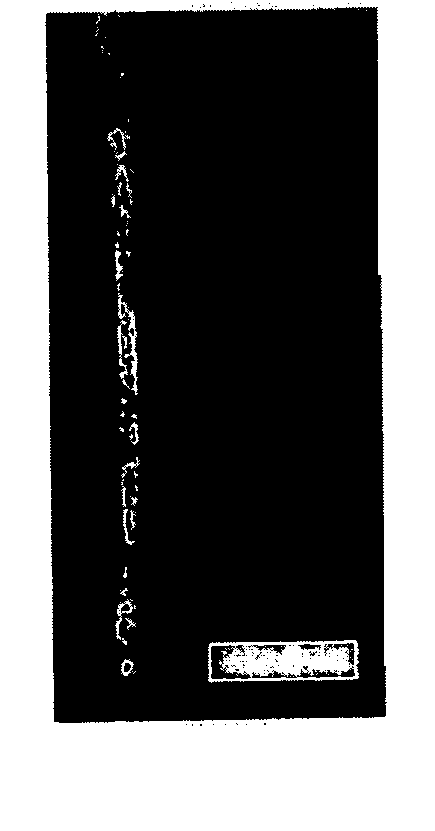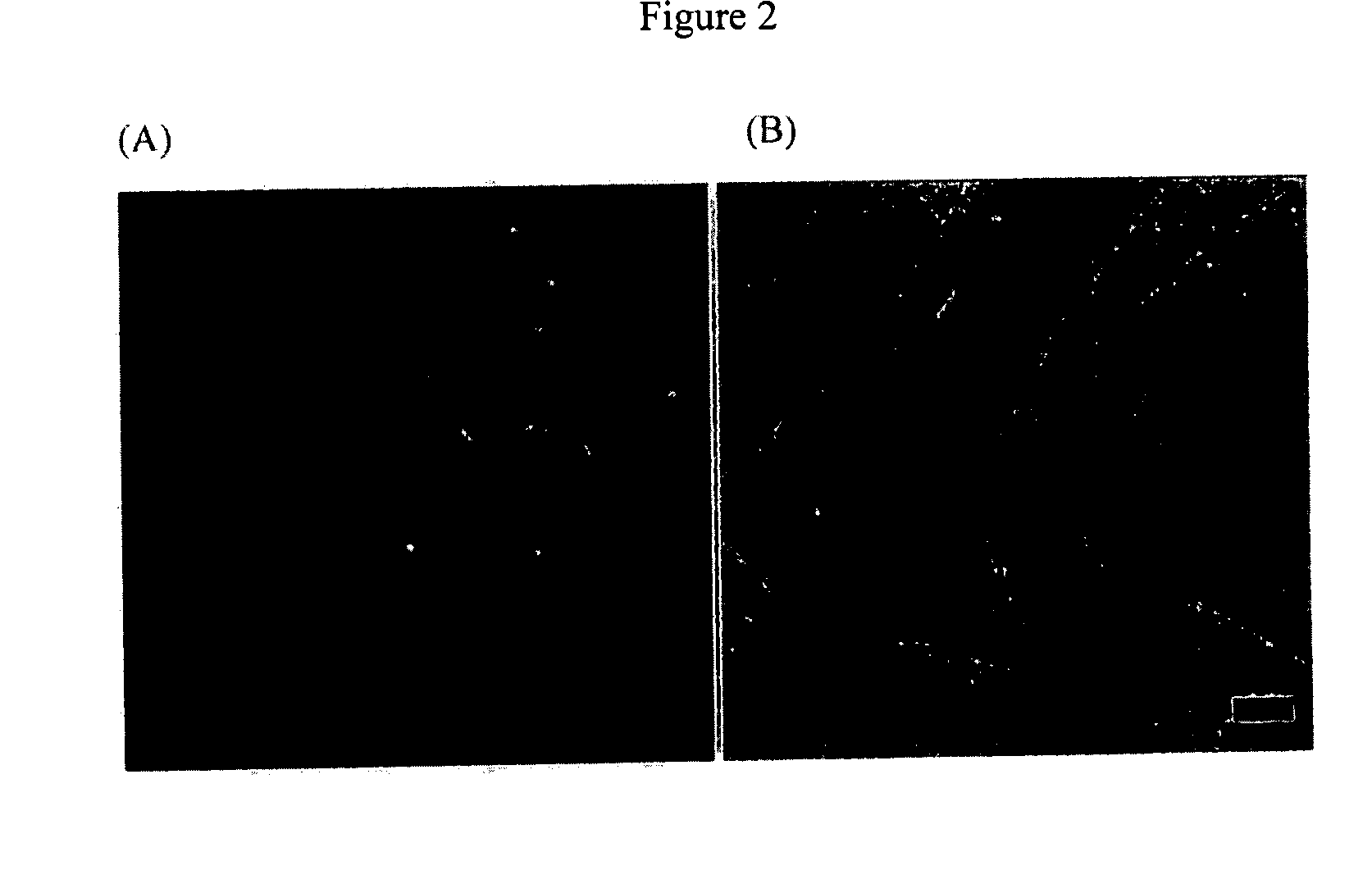Viral fibers
a technology of fibers and fibers, applied in the field of fibers, can solve the problems of reducing the specific surface area of fibers, reducing the surface reactivity, and reducing the amount of fibers
- Summary
- Abstract
- Description
- Claims
- Application Information
AI Technical Summary
Benefits of technology
Problems solved by technology
Method used
Image
Examples
working examples
[0105] The invention is further described with use of the following non-limiting working examples.
[0106] A. Virus
[0107] Anti-streptavidin M13 bacteriophage possessing an engineered peptide sequence, N′-TRP ASP PRO TYR SER HIS LEU LEU GLN HIS PRO GLN-C′, in its pIII coat protein (virus) was used as a basic building block to fabricate the micro- and nanoscale fibers. The virus was selected from the PhD-12 phage display library (New England Biolabs, Inc. Beverly, Mass.) for affinity to streptavidin (5). The virus was amplified and purified according to phage library manufacturer instructions and suspended in tris buffered saline (TBS; 50 mM Tis, 150 mM NaCl, pH 7.5).
[0108] B. Conjugate Material.
[0109] The bacteriophage was used with or without conjugation with R-phycoerythrin (eBioscience, CA) previously reported [5]. Conjugation was at the pIII subunit.
[0110] C. Wet Spinning
[0111] The M13 virus suspension (˜100 mg / ml) extruded through ˜20 um capillary tube into 37.3% aqueous glu...
PUM
| Property | Measurement | Unit |
|---|---|---|
| Diameter | aaaaa | aaaaa |
| Diameter | aaaaa | aaaaa |
| Diameter | aaaaa | aaaaa |
Abstract
Description
Claims
Application Information
 Login to View More
Login to View More - R&D
- Intellectual Property
- Life Sciences
- Materials
- Tech Scout
- Unparalleled Data Quality
- Higher Quality Content
- 60% Fewer Hallucinations
Browse by: Latest US Patents, China's latest patents, Technical Efficacy Thesaurus, Application Domain, Technology Topic, Popular Technical Reports.
© 2025 PatSnap. All rights reserved.Legal|Privacy policy|Modern Slavery Act Transparency Statement|Sitemap|About US| Contact US: help@patsnap.com



